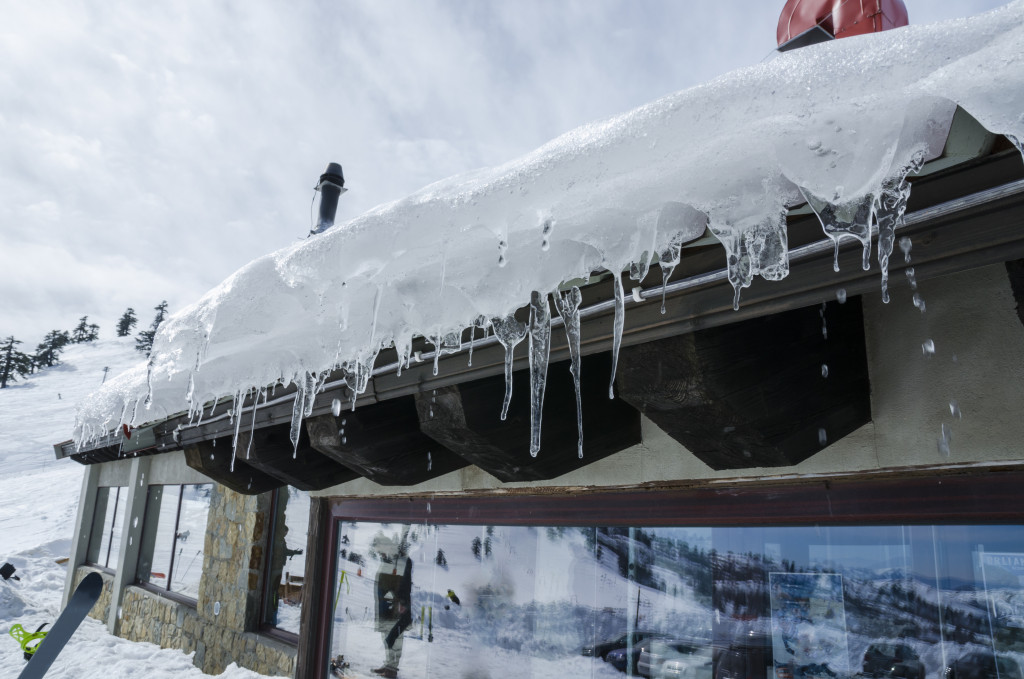- Proper home insulation and weatherstripping can reduce heat loss and energy consumption during heavy snowfall.
- Maintain clean gutters to prevent water damage from snowmelt and avoid the formation of damaging ice dams.
- Regular checks and maintenance of heating systems ensure warmth and safety throughout winter.
- Sealing gaps in windows and doors increases energy efficiency and prevents potential water damage from melting snow.
Are you anticipating heavy snowfall soon? Preparation ensures your home stands strong against winter’s icy grip. This guide will provide the best strategies to safeguard your home from severe snow conditions, helping you stay warm, safe, and free from the worry of potential damages.
Home Maintenance
This section will delve into essential home maintenance tasks to fortify your dwelling against potentially damaging heavy snowfall. Here are some tips:
Insulate Your Home Properly

Proper insulation is critical to maintaining a warm and energy-efficient home during the snowy season. Start by checking your home’s insulation in areas vulnerable to cold air drafts, such as the attic, walls, and basement. Use high-quality insulating materials to patch gaps, ensuring heat does not escape your house.
Furthermore, consider adding weather stripping around windows and doors to prevent cold air intrusion. Investing in thermal curtains can also help keep the heat and cold out. Remember, an adequately insulated home provides comfort during cold spells and reduces energy consumption, leading to significant savings on heating bills.
Clean Gutters
Gutters are crucial in directing water away from your home’s foundation. However, they often get clogged with leaves, twigs, and other debris during fall. If not cleaned before winter, snowmelt will not drain properly, potentially leading to water seeping into your home or causing ice dams. Ice dams can cause significant damage to your roof and gutters themselves.
To prevent this, ensure your gutters are cleaned and checked for leaks before the snowy season. Use a sturdy ladder to climb up and remove debris, but remember to prioritize safety: use gloves, secure the ladder properly, and never overreach. If the task seems too risky, consider hiring professionals. Maintaining clean, functioning gutters is essential in preparing your home for heavy snowfall.
Check Heating Systems
Before winter sets in, thoroughly inspect your heating systems to ensure they function correctly. This includes your furnace, radiators, and any fireplaces you may have. Not only will this keep your home warm, but it also prevents potential hazards such as carbon monoxide leaks or fire.
Start by replacing the filters in your furnace to ensure efficient heat distribution and lower energy consumption. Additionally, bleed your radiators to remove any trapped air that could prevent them from working efficiently. For those with fireplaces, consider hiring a professional to inspect and clean your chimney, reducing the risk of chimney fires.
Finally, check your home’s carbon monoxide and smoke detectors to ensure they’re operational. This is essential as heating systems, if not maintained correctly, can lead to risky situations. Taking time to check your heating systems will help ensure a warm and safe winter.
Seal Windows and Doors
Cracks or gaps around windows and doors are common entry points for cold air, significantly reducing your home’s temperature and increasing energy costs. It’s essential to check these areas and apply caulk or weatherstripping to seal any gaps effectively.
Inspect the frames for cracks and use a clear caulk for gaps up to 1/4 inch. For larger gaps, use expanding foam sealant. Weatherstripping can be used on movable components like doors and operable windows. Remember to apply both to clean, dry surfaces for optimal adherence.
Additionally, check your door’s threshold for gaps. Consider using a door sweep for added insulation if daylight is visible under the door. These steps will make your home more comfortable and energy-efficient in winter and help prevent potential water damage from melting snow seeping through the gaps.
Trim Overhanging Branches

Overhanging tree branches can become exceedingly hazardous during heavy snowfall. The snow’s weight can lead to branches breaking and falling onto your roof, causing significant damage. Moreover, branches near your home can provide an easy pathway for rodents to enter your attic.
Before winter arrives, take the time to inspect your property for any tree limbs that could potentially cause problems. Use a reliable tree pruner for smaller branches, but for larger, higher ones, consider hiring a professional tree service to ensure safety. This step not only protects your home’s structural integrity but also preserves the health of your trees by preventing breakages and disease.
Hire Roofing Services
Hiring professional roofing services is vital in preparing your home for heavy snowfall. Trained professionals can provide:
- A thorough inspection of your roof.
- Identifying any potential problems such as loose shingles.
- Cracks.
- Leaks that could worsen under heavy snow or ice.
Remedying these issues before winter can prevent costly damages and ensure your home remains warm and dry. Furthermore, expert roofers can assess your roof’s overall structural integrity and weight-bearing capacity, determining if it can withstand heavy snow accumulation.
They may offer solutions such as roof reinforcements or suggest installing a roof heating system to reduce snow build-up. By investing in professional roofing services, you prioritize safety and prevent potential roofing issues that could compromise your home’s insulation and structure during winter.
In conclusion, preparing your home for heavy snowfall is more than just a routine task—it’s a step towards ensuring safety and warmth during winter. Don’t wait for the snow to pile up. Start inspecting, reinforcing, and insulating your home today. Your efforts now will result in a cozy, worry-free winter ahead.





